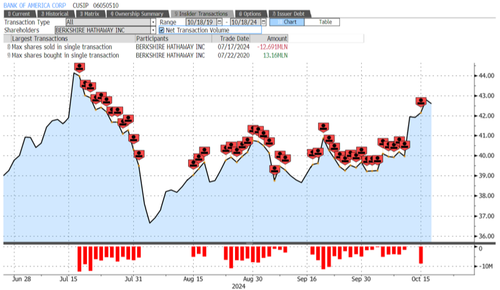
It was late in the afternoon and Const. Mario Chitaroni was patrolling the Trans-Canada Highway in Northern Ontario, running speed traps, waiting for something to happen. Around 3 p.
m., a call came in from a driver who noticed something strange in a ditch, near a turnaround zone for snowplows on the side of the road. At first, Chitaroni couldn’t find it.
But as he walked toward some tall grass at the edge of the pavement, he started to smell it. As he got closer, the smell got worse. “I just looked over the edge, right beside a garbage can, and there was a big, big pile of lobsters,” he said.
“They had all the elastics on their claws.” There had to be hundreds of them, piled on top of one another, three or four deep, all of them dead. From the police crime scene photos, it looked like one had made a desperate attempt to get back to water, crawling a few feet away from the others before giving up and flopping on its back, claws splayed out on the pavement.
It was July 2 and balmy. Chitaroni guessed the lobsters had been rotting there in the heat for at least a day, judging from the look and the smell of them. None of it made any sense, not to the Ontario Provincial Police, and not to anyone in the seafood business.
For starters, nobody in the industry would send a shipment of live lobsters that far north, not on the road at least. Best-case scenario, a lobster can survive a few days in transit, in a crate out of water. So the farthest that any East Coast operation will truck a live lobster is Toronto, where they can catch a cargo jet to Asia.
Any farther than that, it’s best to send them by air, or cook them and freeze them near the wharf, then load them onto a truck. But the lobsters on the highway weren’t cooked. And they were about 400 kilometres north of Toronto, on a stretch of Hwy.
17 near Bonfield, Ont., a Franco-Ontarian township just east of North Bay. At the local OPP detachment, Chitaroni’s supervisor, Sgt.
Juliane Porritt, was mainly worried about getting rid of the lobsters as quickly as possible. “We didn’t want the black bears to find them,” she said, “because then there would be bears on the highway.” And bears on the highway can end badly.
“They’ll destroy your car, send people off the highway,” she said. “Then we have little bears with no moms.” The OPP called the provincial government contractor that deals with roadkill, and a crew came to take the lobsters to the dump.
Around the same time, Porritt started doing some research. “We (needed) to find out where they came from, because it was a very strange thing to find lobsters in the ditch,” she said. “So I started calling.
I started googling.” She reached out to the federal department of fisheries and oceans and talked to some enforcement officers there. She wanted their theories on why it happened, why someone would need to quietly get rid of a commercial quantity of lobsters.
But she missed one crucial piece of information. No one told her to keep a rubber band from one of the lobster claws. About 10 days earlier, the Nipissing Rotary Club was holding a fundraiser at the local university’s cafeteria in North Bay.
It was an all-you-can-eat lobster supper. In the past, individual diners at the fundraiser have eaten as many as six lobsters in a sitting, maybe more, according to the organizer. The club had ordered almost 900 pounds of lobster from New Brunswick.
But in the lead-up to the event, organizer Maria Maille heard her lobsters weren’t going to make it in time for the Friday night dinner. Police report an alarming rise in tractor-trailer cargo theft that’s putting consumers at risk of eating stolen, potentially tainted food. There’d been a mix-up with the delivery.
The lobsters were stuck in Toronto, and wouldn’t arrive until Monday. Maille started making frantic phone calls. Monday wasn’t good enough.
This was the club’s biggest fundraiser of the year. More than 280 people were coming. She needed the lobsters now.
It took half a day of wrangling, but she managed to arrange for a refrigerated truck to bring the lobsters up from Toronto in time to be reheated and served. And in the end, the event was a major success, raising more than $21,000. But it was also an intriguing coincidence.
Less than two weeks after the event, the dead lobsters showed up by the side of the Trans-Canada. Was it crazy to think that maybe the club overbought and someone dumped the evidence? It was a troubling question for Maille, who bristled at the suggestion that a Rotarian could be capable of something like that. “That makes me really sad,” she said.
Looking at the police photos, Maille noticed something that vindicated her club. The dead lobsters on the highway were dark brown, with elastics on the claws, not the bright red colour lobsters turn when they’re cooked — and her lobsters were cooked in New Brunswick before they were shipped. “I know 100 per cent it’s not mine,” she said.
“That’s all raw, and mine’s all cooked.” Around 9 a.m.
on Canada Day, the St. George RCMP detachment in New Brunswick got a call about a robbery at a wharf in the Bay of Fundy, about half an hour’s drive west of Saint John. The lobster season had just closed and it had been quiet at the wharf all weekend.
But that morning, a fisherman noticed the latches on a floating storage container had been pried open. About 800 pounds of live lobster, valued at around $8,000 or more, was missing from Misty Harbour Seafood. Police suspected the thieves had come in sometime over the weekend, between June 29 and 30, but it was impossible to tell, because there were no cameras covering the area and no one around to witness the theft.
Megan Thompson, who runs Misty Harbour with her dad and brother, figured it had to be somebody who knew the lobster business. Nobody else would know where to find the lobsters unguarded, or how to sell so many without getting caught. In the aftermath, Thompson said she heard from one woman who said a drug dealer in Saint John was selling lobster.
Tips were coming into the local RCMP detachment too. Cpl. Jayson Hansen, who helped supervise the investigation, said they followed up on a tip that the lobsters were being sold out of a house nearby.
Some officers drove over to check it out, he said, but no potential buyers were seen going in and out of the house, as you might expect if hundreds of stolen lobsters were for sale in the basement. It was an unusual case for the area. Police had dealt with one or two missing lobster traps in the past, and once a full truckload of lobsters was stolen, Hansen said, but never 800 pounds directly from a wharf.
An investigation into loss-leader strategies and stadium economics reveals a promotion that’s even smarter than it looks. Hansen didn’t expect the thieves would have stuck around. Media in the region covered the robbery.
It would be tough to sell that many lobsters locally without someone getting suspicious. “We do get a lot of criminals running to Ontario,” he said. A few days after the robbery, Hansen got an email from an RCMP analyst who monitors social media.
It was a report about the lobsters on the side of the highway near North Bay. “Pretty good chance it has to be our lobster,” he said to himself. After the OPP found the lobsters near North Bay, they put a notice online with photos of the bodies, warning the public that it is “illegal to litter or dump on the highway.
” The photos caused a minor media frenzy at the time, with stories about the discovery popping up all over the country. But no one in the area came forward to say they a lost truckload of lobster, and there were no reports of lobster theft around Ontario, according to Acting Det.-Sgt.
Mark Haywood, an investigator with Peel Regional Police and one of the leading authorities on cargo theft in the province. After the OPP found the lobsters, they put a notice online with photos of the bodies, warning the public that it is “illegal to litter or dump on the highway.” Almost immediately, Megan Thompson, the vice-president of Misty Harbour Seafood, started hearing from friends and colleagues, all of them sending links to the same story.
“Glancing at it, I thought, ‘Oh that could definitely be our lobster,’ ” Thompson said. “The timing works out. It was only a couple days afterward so, you know, lobster don’t survive unless they’re in water.
So after a couple of days, yeah, your lobster are going to pass away. What are you going to do with them then? I guess chuck them on the side of the highway.” In Ontario, police had a slightly different theory.
They believe the thieves could have run into one of several weigh stations for trucks on the highway around North Bay, then panicked, dumped cargo and turned around. But without a band from one of the lobster claws — which can have trace codes printed on them — it was hard to be sure. Looking closer at the OPP photos, Thompson saw something weird.
Some of the lobsters in the ditch had pink bands on their claws. Importers say wild price swings are now the norm, with climate change and war causing flash shortages, clogging supply chains and injecting sudden “It’s not a common colour, well not for me anyways,” she said. “I’ve never seen it.
” A survey of rubber manufacturers and sales reps who sell bands for fishing operations up and down the East Coast, for lobster, crabs, clams and oysters, failed to turn up any vendors who sell pink bands. Red is much more common. And when the red bands sit out in the sun, they can fade to pink, said Lloyd d’Eon, general manager Vernon d’Eon Fishing Supplies, the outfitter that supplies Misty Harbour.
But Misty Harbour doesn’t use red bands on their lobsters, Thompson said. They only use blue, green and cream. Staff there grade the lobsters by hand, and would have noticed an unauthorized colour like red or pink, she said.
At the St. George RCMP detachment, Hansen had an idea. “Would they go through the trouble of re-banding?” he said, almost thinking out loud.
“Well, again, that’s strictly a guess.” But re-banding a truckload of lobsters would be dangerous work. If a lobster grabs your finger in its claw, your first instinct is to attack, to get it away from you, but the lobster just pinches harder.
You can rip the arm off the body and the severed claw will stay sunk into your finger. At this point, the RCMP is at a loss. The official classification for the Misty Harbour robbery case is “insufficient evidence to proceed.
” But instead of being puzzled, Mario Chitaroni — the officer who found the lobsters in a heap — is just disgusted. Not by the rot or the smell of his discovery, but by the waste, by the idea that hundreds of lobsters were pulled from the bottom of the ocean, banded, caged and hauled more than 1,000 kilometres, only to be left dead or dying, in a ditch..














